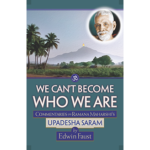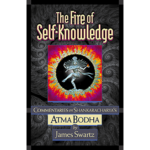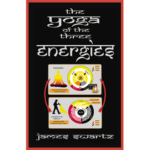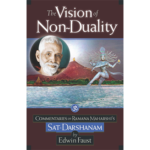I have a doubt about what does it mean that mind should be fixed on Self or that the qualified mind is turned inward to the Self. Because Self is non-dual, it can’t be neither inside nor outside. Self is also not an object, so how could be mind fixed on Self or speaking the same in other words how can attention be directed towards the Self?
In the book, in chapter 5., I’ve read: “Imagine that you are out in nature on a path and you meet a stranger. Before any words are exchanged, what do you experience? You see a body and you see consciousness.”
Again, how could I see consciousness? It is not an object. It’s confusing. Overall, traditional Vedanta is by far the wisest thing I’ve ever heard. There are some pieces of the teaching that I can’t comprehend, like abovementioned doubts. Best regards
James: Yes, it is true that the mind can’t be fixed on the Self because the Self in a different order of reality from the mind. Nothing can be fixed on it because everything is it. Or, just as the human eyes can’t see ultraviolet or infrared, you can say that the Self is too subtle for the gross mind to experience.
At the same time, the mind can be fixed on something that is in its own dimension; thoughts, feelings and actions, for instance. When you see an attractive object like a beautiful person, or an unattractive object like the corona virus, the mind starts to think about it. And the more it thinks about the object the more it takes the form of the object. It never becomes the object but it becomes like the object. When we say fix the mind on the Self we mean think about the teachings of Vedanta, which all reveal the Self, not directly, but indirectly. For instance when you look in a mirror you don’t see your face, you see its reflection, but you don’t see any other face, so you know who you are. The teachings are word mirror that reveal your Self, which is experienced by the mind as beauty, peace, existence, freedom, and consciousness.
When you see a person you don’t “see” consciousness directly, you infer it. You reason that if a person is standing in front of you, he or she is alive and consciousness and from this fact you reason one more step. You understand that a person can’t be conscious unless there is consciousness. Or that a person can’t exist unless there is existence. And furthermore, you think about the fact that existence/consciousness (satchit) is limitless and unborn and unchanging. There aren’t two existences or two consciousnesses. If there were, you would be two entities but you don’t experience yourself as two entities, nor do you experience two or more lives at once. All the teachings of Vedanta reveal the Self to be limitless, unborn, ever-present, unchanging bliss, a partless whole.
Obviously it takes time to get to this point but it doesn’t matter because you have discovered the secret of happiness. Every time you think of the Self, you get access to the bliss and freedom and you realize that the mind can be controlled and directed by you. The more effort you put into keeping the mind on the teachings, the more confident you become. And the more confident you are, the more you like yourself. So the bliss, the self love, just keeps growing and growing. We call this discipline “taking a stand as awareness.” Eventually the mind thinks of nothing else and is free of limiting thoughts.
It’s a process. We call it Self actualization (nididyasana). It seems difficult but, it really isn’t because the more you think of who you are, the more bliss you get. What better way to occupy the mind. If you don’t give it good work it will slowly eat you up and it will convince you that you are going to die one fine day, which is not a happy thought. Whereas, if you do the work, you will see that you are actually unborn and immortal existence/consciousness and you will enjoy yourself every minute.











